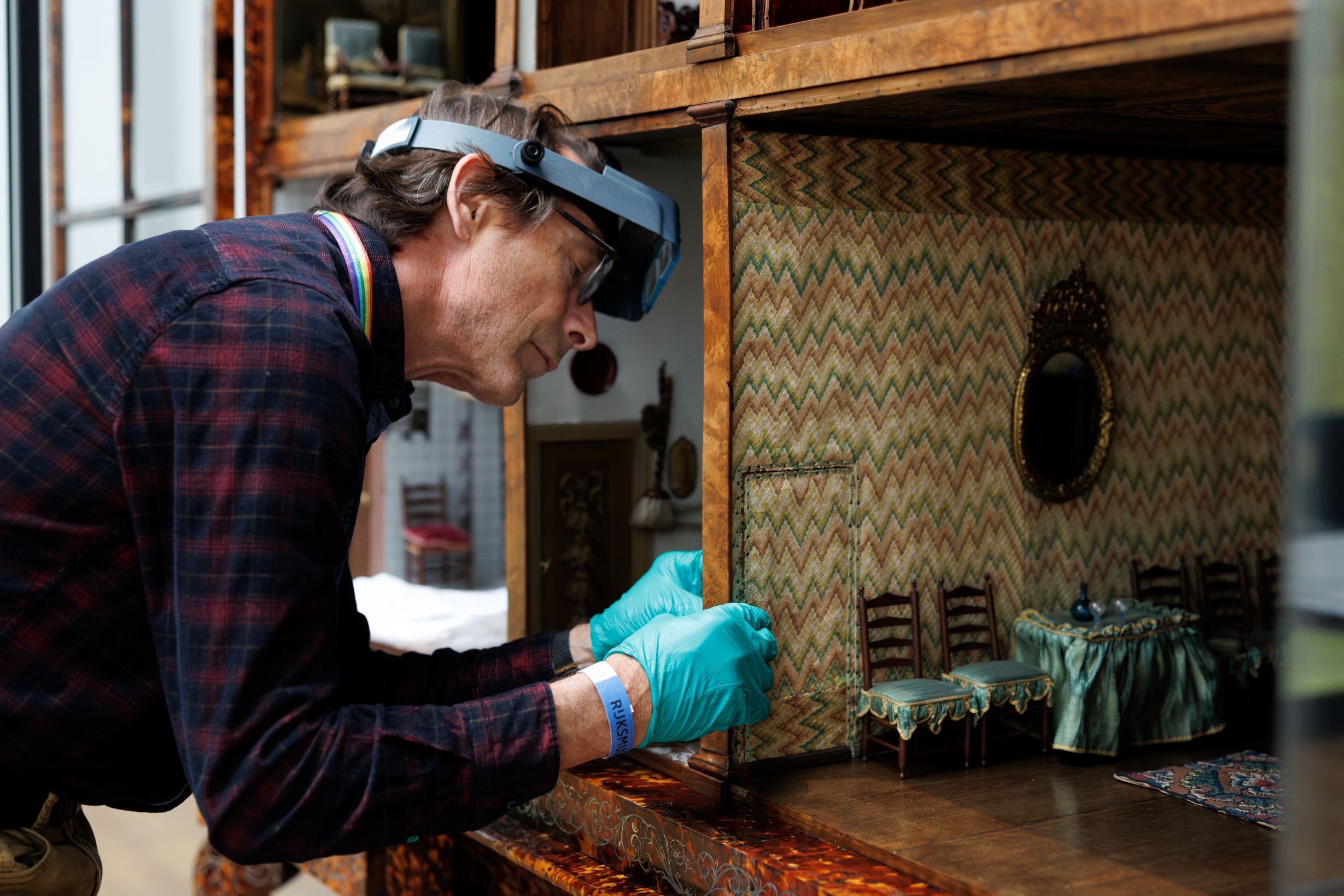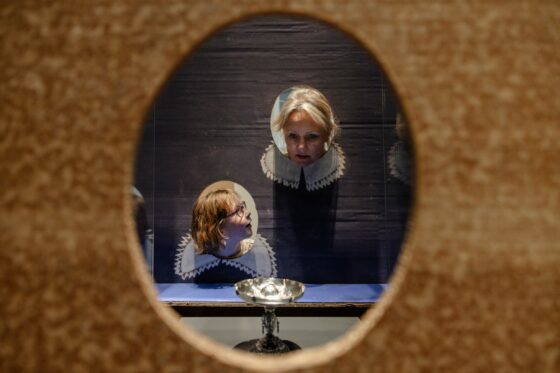New Rijksmuseum show focuses on home life in the 17th century
Senay Boztas
They were some of the richest people in the world – and now their prized possessions are presented in cardboard boxes.
A new show at the Rijksmuseum, “At home in the 17th century”, takes a different look at the lives of people during the Dutch “golden age” – from the rich merchants with a doll’s house that cost as much as a canal house to the labourers of the Jordaan who depended on tokens for their loaf of bread.
“The 17th century is the heart of the Rijksmuseum’s collection and in the last 100 years there has been a lot of research into 17th century interiors – but always very specialised, by material…or by location,” said Taco Dibbits, general director of the Rijksmuseum.
“Now we have brought all of the specialisms together so that there can really be a personal perspective: how did people really live in the 17th century? What are the stories of the interiors, based on the things people used at home – not just the most beautiful treasures, but also the things for everyday use? The exhibition follows a day in the life of someone from the 17th century.”
Some of the things we know about that era – such as Rembrandt’s portraits, Vermeer’s studied interiors or the celebrated doll’s house belonging to Petronella Oortman – are not quite as true-to-life as you might think, said curator Sara van Dijk.
“A lot of us have an idea about the home in the 17th century, and for most people that is based on paintings – paintings in the Rijksmuseum that I know so well…that seem to give an impression of the daily world of that time,” she said.
“But in this exhibition, we show the 17th century life that was not in those paintings. Actually, those paintings were the Instagram of the 17th century – they sketched out the ideal image…But of course it wasn’t like this in reality and we focus on the actual objects like a broom, the normal things that everyone had at home.”
Some of these objects are indeed less commonly shown by museums. Theatre director Steef de Jong uses a cardboard box to present a curious wooden syringe used either for contraceptive purposes after sexual intercourse or for “a more pleasurable possible use” for a woman, according to the description. Another box shows a corset; others show silverware, a fireguard, a stove, essential for heating draughty homes or single rooms.
“Cardboard fits so well,” he said at a press opening on Tuesday. “Cardboard is something that refers to the now – and it is always everywhere around you. If you order a package, if you buy anything, everything is wrapped in cardboard.
“But if you set the 17th century in a cardboard setting, it really pops out and you see that it’s all about the objects…You forget you are in a museum and the things really come to life.”

The exhibition features Oortman’s doll’s house that inspired the book and drama The Miniaturist – and for the first time opens up its secret cellar, with an audio guide narrated by Helena Bonham Carter, and an accompanying podcast.
But it also represents the life of the working class, who might spin for a living using tiny stone spindle whorls, depend on bread tokens used in Amsterdam’s Jordaan for discounted rye bread, heat a damp room with a precious stove, and gamble with a drinking game version of the Dutch “ganzenbord”.
Death
Hygiene was important – displayed in your starched linen collar more than full-body washing – but the reality of the 17th century was also one of early death, said van Dijk. One of the objects displayed is a diary in which the owner recorded the deaths of parents and many children; another is a deathbed portrait of an baby and the funeral bier used to carry coffins for members of the bakers’ guild.
“The ideal image of the time was a family, a woman with children, but the reality wasn’t always like that,” said Van Dijk. “In the 17th century home, life was very closely connected with death.”
At home in the 17th century runs from 17 October 2025 to 11 January 2026 in the Rijksmuseum in Amsterdam
Thank you for donating to DutchNews.nl.
We could not provide the Dutch News service, and keep it free of charge, without the generous support of our readers. Your donations allow us to report on issues you tell us matter, and provide you with a summary of the most important Dutch news each day.
Make a donation